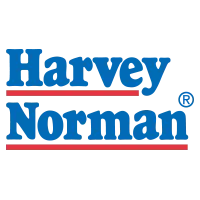The tech industry’s approach to leadership roles is evolving, with an increasing emphasis on internal promotions and a growing recognition of the need for broader business acumen and strong interpersonal skills.
Have you been considering a move into a new leadership role?
If so, the approach to hiring and promoting leadership roles has transformed significantly over recent years.
Learn more from Sean McCartan, CEO of The Onset, and Claudia Barriga-Larriviere, Chief of People Officer at Good On You.
Sean leads the executive hiring practice across Product and Engineering for Onset and provides his perspective on the current state of the market, shedding light on the challenges and opportunities for aspiring leaders in tech. Claudia discusses her view from the perspective of hiring and nurturing leaders internally in organisations.
Market Shifts and Leadership Opportunities
The tech market today is a far cry from the booming opportunities of 2021 and 2022. 2023 was marked by limited opportunities for new leadership roles. However, there are signs of change on the horizon in 2024. Sean notes that post-Easter, there has been a noticeable increase in hiring activities and leadership opportunities. We are seeing increased hiring activities across all aspects of the market with startups, scale-ups, mid-sized enterprises and large financial institutions, showing a renewed interest in bringing in new leadership hires as they return to growth.
Despite this uptick, breaking into leadership remains challenging, especially for those without prior experience in similar roles. Companies often prefer candidates who have “been there and done that,” making it tough for new leaders to emerge unless they are already working within large, well-established organisations.
Internal Routes and Leadership Development
For those looking to step into leadership, Sean advises taking an internal route within their current employer rather than seeking external opportunities. This approach is more feasible and often more successful. Internal candidates who have demonstrated their capabilities and potentially benefited from company training are more likely to be considered for leadership positions due to the investment already made in them.
Sean predicts an increase in startup activity over the next three to six months, driven by new investments. This growth would open up more leadership roles, although it may take some time for these opportunities to fully materialise.
Qualities of Effective Leaders
When assessing potential leaders, certain qualities stand out. Claudia emphasised the importance of self-awareness, curiosity about the business, and the ability to have difficult conversations. These traits are crucial for effective leadership, particularly in a tech environment where first-time leaders often find themselves navigating uncharted waters.
Self-awareness involves recognising one’s limitations and knowing when to seek help. This trait is vital for creating a psychologically safe environment where team members feel comfortable expressing their concerns and ideas.
Curiosity about the business extends beyond technical expertise, requiring leaders to understand the company’s revenue model, customer base, and overall business strategy. This broader perspective enables leaders to make more informed decisions that align with the company’s goals.
Having difficult conversations is another critical skill. Leaders must be able to address challenges head-on, whether it’s discussing performance issues with a team member or negotiating project timelines with stakeholders. This ability to communicate effectively, even in uncomfortable situations, is a hallmark of capable leadership.
Navigating Mismanagement and Promotions
One common issue in the tech industry is the mismanagement of promotions. Often, individuals are promoted based on their technical skills rather than their leadership abilities. This practice can lead to challenges, as technically proficient individuals may lack the necessary people management skills. Sean highlights the importance of looking beyond the resume and understanding the journey and decision-making processes of potential leaders. Role fit based on competencies is an important consideration.
Effective recruitment involves digging deeper into candidates’ experiences and assessing their true leadership potential. This process includes understanding how they have managed teams, their approach to problem-solving, and their ability to mentor and develop others. It’s not just about finding someone who fits the technical requirements but also someone who can lead, support and inspire their team.
In Conclusion…
Aspiring leaders should focus on developing these qualities, seeking internal opportunities for growth, and continuously learning and adapting to the changing market landscape. Taking the initiative to step up when smaller opportunities present is a great way to test your leadership competencies and establish experiences for you to reference at your next interview.
For companies, the challenge lies in recognising and nurturing leadership potential within their existing workforce while also being open to bringing in external talent when necessary. By fostering a culture of continuous learning and development, companies can build a robust pipeline of future leaders ready to navigate the complexities of the tech industry and help shape a brighter, stronger future for their teams and their customers.



















